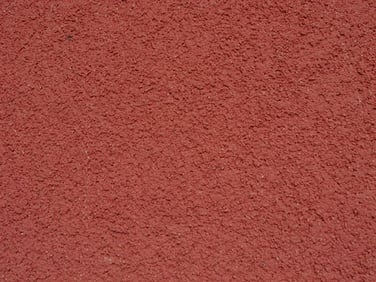 Stucco is a popular, long-lasting choice as an exterior facade on many homes.
Stucco is a popular, long-lasting choice as an exterior facade on many homes.
Modern stucco is typically made up of Portland cement, sand, and lime; and just like any other masonry surface it needs to be protected from the elements if you want to keep it intact and looking good over time.
More so than maybe any other type of siding there seems to be the idea that one must get fancy when painting their stucco structure -- requiring the use of special primers and coatings to get the job done. But aside from performing any repairs, painting stucco is a pretty standard process.
Check The Surface For Cracks & Blisters
Cracks - Small cracks in the surface are not necessarily a big deal. Often times they're just caused by settling or expansion and contraction, and are easy enough to fix.
Sherwin Williams makes a line of patches and sealants that we like, that are suited for just such a task, called ConSeal. ConSeal comes in both knife-grade (to be applied with a putty knife) and gun-grade (to be applied with a caulking gun), as well as smooth and textured finishes to match that of your home. Many people are tempted to skip the crack repair in hopes that the finish coat of paint will cover them up, but even if they seem to disappear when you apply the paint, they will usually be visible again once the coating has dried.
Check out our video below on the subject:
Blisters & Crumbling Stucco - Although repairable as well, these can be a bit more of an involved activity that may require the help of a skilled craftsperson.
The issues that you can run into when repairing stucco are that, depending on the age of your home, there's no telling just how involved the repair can end up becoming. The finish could have been applied over different types of surfaces (i.e. block, wood or metal lath, etc.) and it could have been achieved using multiple layers of mix (i.e. base coats or scratch coats, as well as finish coats) -- not to mention the artistic ability needed to match the finished texture of the patch/repair to the existing finish.
Because there are so many variables to deal with on a repair, unless you have experience doing masonry work it is probably best to contract at least this portion of the project to the pros so that your patches don't stick out like a sore thumb.
How Do I Know If I Need A Primer?
It's a common misconception that you always need to use a masonry conditioner prior to painting your stucco. But if your home has been previously painted you can usually get by with a good cleaning, so don't be lured-in by the Loxon Conditioner lie that many painting companies will try to sell you on.
After you've done your pressure-washing or hand scrubbing work with a quality pre-paint cleaner, if there's still a fair amount of chalking on the surface then applying the right primer may be what's needed to allow the topcoat to adhere correctly.
No Need For A Specialty Coating
Some contractors and even some paint stores will tell you that you need to use an elastomeric coating on stucco. I've heard a couple of different reasons for this, siting the need for an elastomeric's flexible or waterproofing properties.
In reality, not only is an elastomeric unnecessary it can actually cause problems. Waterproof coatings can keep moisture out of a home but they can also trap moisture inside the building and keep it from naturally escaping like a normal exterior paint would allow it to do.
All you really need is two coats of a high-quality 100% acrylic exterior paint like Sherwin-Williams' SuperPaint, or one heavy coat of Duration or Emerald.
Application
Paint can be applied to stucco in a variety of ways. And the great thing about it is that you don't have all of the cutting-in to do with a paint brush like you would if you were painting lap siding.
If you've got enough space between your home and your neighbors' houses you might want to try using an airless sprayer to speed up the process even more.
If you're uncomfortable with that then a quality knit roller cover will do the job just fine. Depending on how aggressive the texture is you may want to experiment with different thicknesses, starting with at least 1/2" nap and going up from there until you get good coverage.
If you live in the Greater Tampa, FL area and need assistance with your stucco painting project, please give us a call at (813) 570-8800 to schedule a free consultation and quote, or simply click on the button below to have us call you.
photo by: Cindy Kilpatrick / CC BY 2.0







 Stucco is a popular, long-lasting choice as an exterior facade on many homes.
Stucco is a popular, long-lasting choice as an exterior facade on many homes. 